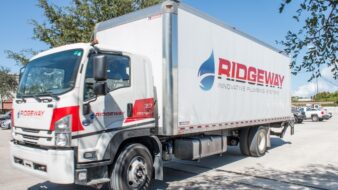In a joint statement from the International of Fire Fighters (IAFF) and the United Association of Plumbers, Fitters, Welders and Service Techs (UA), the use of plastic piping in construction negatively impacts the health and safety of workers, first responders and building occupants.
All buildings should require the installation of safe, recyclable, non-combustible, and sustainable piping materials for plumbing systems to protect the health and safety of first responders, building occupants and the environment.

According to the release, the Model Plumbing Codes barred plastic plumbing pipes from high rise buildings for decades but have been weakened by special interests which jeopardizes health and safety. Cancer rates among fire fighters have dramatically increased due to exposure to toxins from plastics and other building materials used in construction.
Although plastic piping (PVC, CPVC, ABS) is appropriate for some uses, the codes should prohibit the installation of plastic piping for drain, waste, and vent (DWV) plumbing in hotels and residential buildings greater than two stories in height.
It should also prohibit plastic pipe in critical patient occupancies such as hospitals, nursing facilities, high rise residential structures and healthcare facilities.
Plastic pipe not only emits toxic gases when burned, but requires more complex firestopping systems in fire- rated construction than non-combustible pipes. If improperly installed and/or inspected, these systems allow fire to spread more easily.
Plastic water piping also leaches hydrocarbons and chemicals into drinking water. A recent analysis of the many plastic pipe material variations identified 163 leachable substances and 74 of these are not understood or regulated.
Off gassing from plastics and the adhesives used with plastic piping pose long-term health risks to workers exposed to these products during construction and to the occupants of these buildings.
Alternatives that are noncombustible, sustainable, durable and recyclable should be considered in lieu of plastic materials.
* The information derived from this release is from a direct joint statement from the IAFF and the UA.



